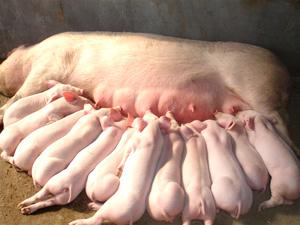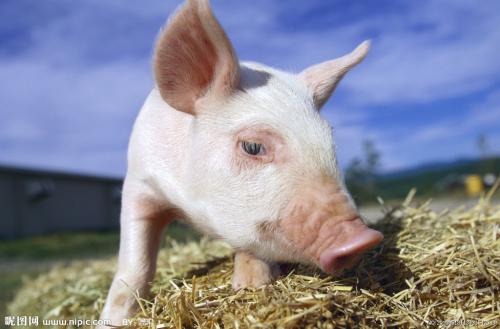Pork quality and safety: why feed and feed additives?
Feed is the key to the pig to eat well. It is the necessary measure to supplement pig nutrition and ensure the quality of products, and also a technology widely spread in the world. Generally speaking, the proportion of feed additives in feed will not exceed 4%, which is higher, and the raising cost will inevitably increase, which is not worth the cost to the farmers.
Question 1: why do pigs need feed and feed additives now?
Pig fat, the key is eat full, eat well.
Qiao Shiyan, a professor at China Agricultural University, said that feed is the key for pigs to eat well. Feed and feed additives are the material basis and technical guarantee of modern pig industry, necessary measures to supplement pig nutrition and ensure product quality, and also the technology widely promoted in the world. The breeding technology, feed use, breeding cycle, pig weight, meat quality and product safety of China are basically the same as those of the United States, Germany, Denmark and other large pig countries, In line with international standards and import and export trade standards.
Feed additives, which include nutritive additives, general additives and drug additives, have a little effect in feed. The traditional single feed can only solve the problem of “satiety” of pigs, and the nutritional additives are mainly feed grade amino acids and vitamins, which is to solve the problem of “eating well” of pigs. Adding an appropriate amount of drug additives in the feed can effectively prevent and control the common and multiple diseases of pigs. By implementing the drug withdrawal period in the feeding stage, the drug residues in pork can be controlled in a harmless range. Adding antioxidants and other general additives in feed, most of which are common with the additives in food industry, belong to food grade, and have no harm to the growth of pigs or the quality of pork.
The state explicitly forbids adding phenobarbital and other sedative hypnotic and anticonvulsant drugs in feed. It is unnecessary to add sleeping pills to make pigs sleep more, move less and grow fat quickly, because the activity of captive pigs is very small, so sedatives are not needed. Urea, Arsenic Preparation and copper are allowed to be added in feed, but they all have corresponding restrictive provisions and should not be used at will. Urea is a kind of high nitrogen fertilizer. If a small amount of urea is used in ruminants such as cattle and sheep, it can be decomposed by urease secreted by rumen microorganisms of ruminants, and then it can be absorbed and digested by synthesizing protein. Pigs have no rumen at all, so it is difficult to use the nitrogen in urea. If the dosage is too large, it will even lead to poisoning and death of pigs. As for the effect of adding copper, only adding appropriate amount of copper in feed can promote the growth of pigs. The specific standard of adding appropriate amount of copper is that the amount of copper additive in 1000 kg feed should not exceed 200 g.
Question 2: how can pigs grow to 200-300 Jin after 6 months?
Pig quality and quantity, scientific breeding is the key.
Wang Lixian, a researcher at the Beijing Institute of animal husbandry and veterinary medicine of the Chinese Academy of Agricultural Sciences, said that scientific pig raising can guarantee both quality and quantity. At present, the normal breeding cycle of pigs is generally 150-180 days. The main reasons for the fast growth and short fattening cycle of pigs are “three good”: good pig, good feed and good circle, that is, good pig breed, safe feed and improved breeding environment. The production of commercial pigs is mainly a ternary hybrid of Duroc, Landrace and large white pigs. It is normal for these high-quality pigs to be sold in about 160 days. The selling period of foreign better pigs is shorter. The fattening time of crossbreeding pigs with local breeds is relatively long, and the average breeding period is 180-200 days.
At different fattening stages before pig slaughter, the feed dosage is different, and the total feed dosage is about 300 kg. The growth cycle of pigs will be increased by at least one month if they are not fed with feed and only fed with traditional pig food such as coarse cereals and pig grass. The development and application of modern feed and feed additives greatly improve feed conversion rate, reduce the cost of pig production, and lay a solid scientific foundation for pig industry to obtain good social and economic benefits. It is estimated that with the application of modern feed science and technology, the conversion rate of formula feed in China has increased significantly, and the contribution rate of science and technology to animal husbandry has exceeded 40%. The conversion rate of pig formula feed increased from 4 ∶ 1 to 3 ∶ 1. In the past, it took one year to raise a pig, but now it can be sold in six months, which is inseparable from the balanced feed and breeding technology progress.
Wang Lixian said that the modern pig industry characterized by large-scale pig breeding is developing rapidly, and the breeding concept and management level are constantly improving. By improving the breeding environment and implementing the harmless treatment of livestock manure, the problems of major epidemic diseases and antibiotic residues were gradually solved. The growth cycle of pigs was gradually shortened, and the weight of each pig was generally about 200 kg.

